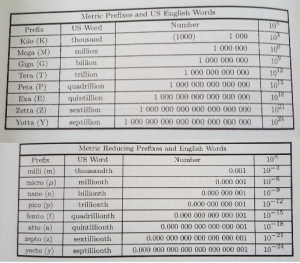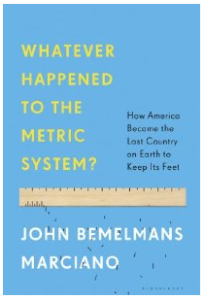Well, the first/last(?) More Than 1.6 Kilometer Ahead awards are out.
Then, on Monday, October 10, 2022, I sent a concern to the House Subcommittee on Science, Space, & Technology regarding our lack of metric system adoption. I requested a Congressional hearing and tried to lay out my case for why this issue is vital to our country.
Will I get a response? I have no idea, but I am also attempting to interest the media looking for support/coverage.
Trying to put 10 years of research into a 10-page document was no easy feat, and I didn’t have an opportunity to run the document past people, so I own all my mistakes in it. Still, I did my best with what I had (including Grammarly). I’ve already started to find typos, but I can hope its substance means more to people than some surface blemishes.
Using my (at best) meager layout skills, I tried to build my case based on my knowledge of the subject. I must have “touched” more than 200 documents as I pulled my “case for the metric system” for the Subcommittee.
I had to look up old information, confirm dates, leverage old graphics, find new ones, and generally worked to make the most “rock solid” explanation possible for serious federal consideration. I only get one shot at this, and people’s lives are at stake due to dosing errors alone.
Produced in three sections, the first section centered on the stated goals of the House Subcommittee’s “Congressional Oversight Plan.” I did everything I could to point to the intersections of the Subcommittee’s Plan and the metric system project.
Section 2 contains what I call my “Initial Documentation.”
I started with the New York Times article dated August 18, 2020, by Alanna Mitchell:

Second 3 contains my request for a Congressional hearing on the topic of the metric system.
I’m trying to make this issue about multiple costs
I tried to work into the document the concept of “our costs” for not adopting the metric system. In lives lost or derailed due to dosing errors, in time wasted looking up conversions, and (let’s face it) our country looks ignorant to the rest of the world. (I have a theory about why so many people from other countries look at my blog. Think “car wreck.”)
What put me on this path?
My contact at the National Institute of Standards and Technology sent me a link to a hearing that took place back in March of this year, and it got me thinking and digging.
After clicking around on the site, I came across this icon.

That icon led me to this page https://science.house.gov/contact/whistleblower
And that page led me to this sentence in the second paragraph:
If you have information to share regarding concerns about federally-funded science, research or technology-related programs, please contact us.
https://science.house.gov/contact/whistleblower
And I do have grave concerns about our lack of metric system adoption. So I pulled together my document and sent it in in honor of National Metric Week.
Either I can make a compelling case, or I can’t. It is now up to others to decide.
Here are a few quotes in my lame attempt to get you to read the entire, ~1,700-word report, but it does have a lot of graphics.
The experiment that John Quincy Adams worried about in 1821 ended very long ago, and the metric system won. Almost every place but here.
Linda Anderman, Page 1 of the report
How much will it continue to cost us in health, safety, education, commerce, and international scientific standing within the world to coninue on our current trajectory?
Linda Anderman, page 2 of the report
Dosing mistakes can be lift-threatening! Avoid if possible. The metric system will help us get this right.
linda Anderman, page 6 of the report
I closed the report with the quote I wrote many years ago, but still holds true.
When you think about all the problems in the world (war, illness, environmental disasters), once we fix our metric system problem, we never have to fix it again. No country that has switched to the metric system has switched back.
linda anderman, page 10 of the report.
Please try to overlook any typos or poor layout of this document, but feel free to share.
It’s a public record now. Let’s see if we can get this discussion back on the table after a 40-year lapse in attention.
Thanks for sticking with me.
Linda























